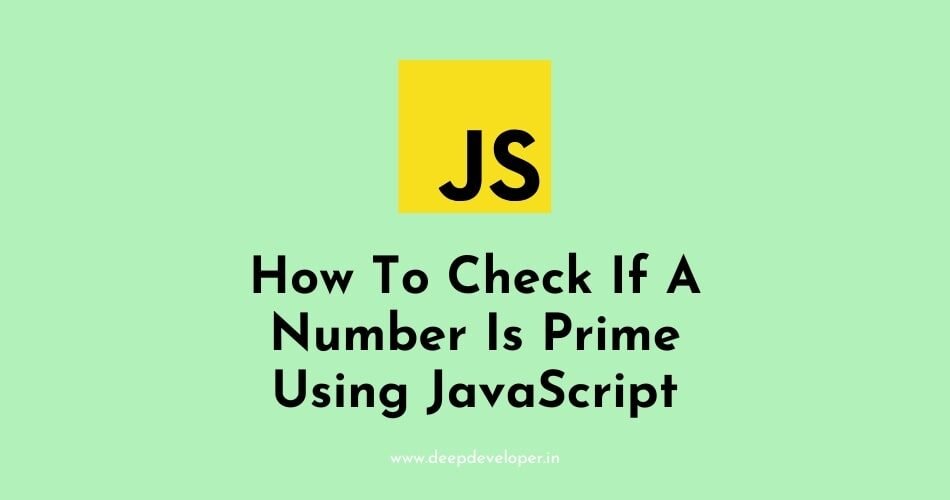A prime number is a positive integer greater than 1 that is divisible by only 1 and itself. In other words, a prime number has no positive divisors other than 1 and itself. For example, 2, 3, 5, 7, 11, and 13 are prime numbers, while 4, 6, 8, and 9 are not (they are all divisible by 2 or 3). The first prime number is 2 and the only even prime number is 2.
A useful fact that can be used to quickly identify a prime number is that, all prime numbers greater than 3 can be represented in the form of 6n ± 1.
Here is a simple example to check if a number is prime using javascript :
function isPrime(num) {
if (num <= 1) return false;
if (num <= 3) return true;
if (num % 2 === 0 || num % 3 === 0) return false;
for (let i = 5; i * i <= num; i += 6) {
if (num % i === 0 || num % (i + 2) === 0) {
return false;
}
}
return true;
}This function first checks if the number is less than or equal to 1 or 3, in which case it returns false or true respectively. Then it checks if the number is divisible by 2 or 3, if so it returns false. If none of these conditions are met, it uses a for loop to iterate through every number from 5 to the square root of the number and check if the number is divisible by that number or the number + 2. If it is divisible, it returns false. Finally if none of the conditions are met, it returns true.
Note that this function is working for the whole range of JavaScript’s number representation.
Also Read:
- Difference Between encodeURIComponent() And encodeURI()
- Convert Comma Separated String Into An Array In JavaScript
- How To Check If A String Is Empty In JavaScript
- How To Sort An Array Of Numbers In JavaScript
- How To Return Multiple Values From A Function In JavaScript
- How To Get The Current URL With JavaScript
- How To Include A JavaScript File In Another JavaScript File
- How To Detect Screen Resolution With JavaScript
- How To parse JSON Into JavaScript
- How To Add Elements To An Array In JavaScript
- How To Generate A Timestamp In JavaScript
- How To Convert A JavaScript Object To JSON String
- How To Add An Element To The Beginning Of An Array
- How To Get The Value From The Input Field In JavaScript
- Adjust The iFrame Height To Fit With Content In JavaScript
- Call Two Functions From The Same onClick Event In JavaScript
- How To Detect When A Window Is Resized Using JavaScript
- How To Reset A Form With JavaScript
- How To Pass JavaScript Variables To PHP
- Difference Between PHP And JavaScript
- Armstrong Number In JavaScript
- How To Determine If A Number Is Odd Or Even In JavaScript
- How To Check If A Number Is A Palindrome In JavaScript
- How To Convert Strings To Uppercase In JavaScript
- How To Convert A String To Lowercase In JavaScript
- Code To Check If Age Is Not Less Than 18 Years In JavaScript
- How To Reverse A Number In JavaScript
- How To Check If A Number Is Prime Using JavaScript
- How To Find Factorial Of A Number In JavaScript
- Sum Of Two Numbers In JavaScript
- How To Display The Current Date And Time In JavaScript

